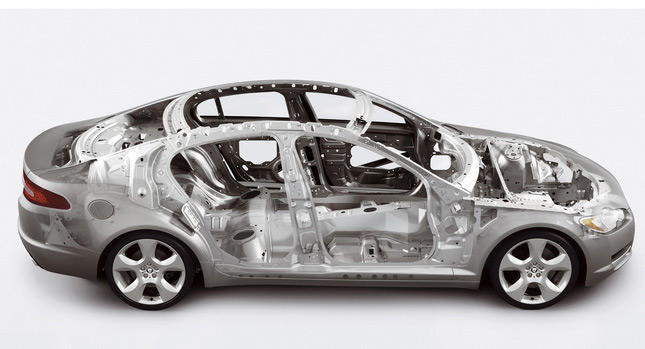Aluminum is playing an increasingly important role in the construction of Jaguar-Land Rover’s (JLR) new models, in an effort to decrease weight and thus, reduce fuel consumption and CO2 emissions.
The most recent example is the brand-new Range Rover that will make its official debut at the upcoming Paris Motor Show.
The use of an all-aluminum monocoque body, which is 39 percent lighter than the outgoing model’s conventional, steel body, and the aluminum front and rear chassis members have resulted in the new SUV weighing a whopping 420 kg (920 pounds) less than the previous model, depending on specification.
“This new aluminum platform delivers significant enhancements in performance and agility, along with an improvement in fuel economy and reduction in CO2 emissions,” said Land Rover.
According to a report from Autocar India, JLR’s parent company Tata Motors is looking into the possibility of building an assembly line in Saudi Arabia.
The reason is that Saudi Arabian mining company Ma’aden and Alcoa, a leading alumina producer and supplier of many automotive companies, have formed a joint venture to construct the world’s largest aluminum smelter in Saudi Arabia’s eastern province.
Tata Motors’ chairman Ratan Tata confirmed the report: “This smelter could make the production of aluminum in Saudi Arabia very competitive”, he said. “So, taking a really long-term view, if we put an assembly plant there with a large press shop, given our commitment to aluminum in our products, we could have an interesting business case which we are examining today.”
Land Rover isn’t the only one relying heavily on aluminum; Jaguar is also using the lightweight material in its XK and XJ models and plans to do so even more in future products.
Setting up shop in Saudi Arabia could bring other benefits to the two British luxury brands, as the Middle East, North Africa and Asia are markets that could help in their expansion.
Combined sales of Jaguar and Land Rover have increased by 36 percent, to 110,373 units in the current fiscal year. In the Middle East and North Africa (MENA) business regions, sales are up by 14 percent.
By Andrew Tsaousis
PHOTO GALLERY







